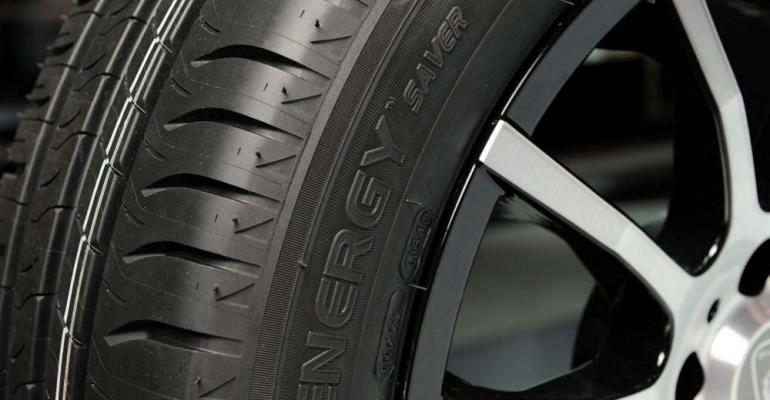There are many types of tires, including winter, performance and all-season varieties, but a relatively new class of rubber that improves fuel-efficiency is on a roll, especially in Europe, where fuel prices are double those in the U.S.
Known as low-rolling-resistance tires, but increasingly called “green tires,” they are expected to reach 20%-30% market penetration in Europe by 2017 and 70%-80% by 2022, industry sources predict.
Low-rolling-resistance tires already are common on U.S. models that stress fuel-efficiency, such as hybrid-electric and battery electric vehicles. The tires typically can reduce gasoline consumption by 5% to 7% and are the fastest-growing part of the tire sector globally. But they also typically sacrifice durability and braking performance in slippery conditions.
Now, specialty chemical supplier Lanxess is showing off a prototype tire that it says eliminates these compromises by providing both fuel-saving low rolling resistance and lots of grip on wet pavement.
Its AA Concept is the first tire that would earn a double-A rating under new tire labeling regulations that go into effect in November in Europe, Lanxess says.
With the mandatory labeling requirement, tires will be graded from A to G according to their fuel efficiency and wet grip. The new regulations are designed to provide consumers more information on the value of fuel-saving tires. Comparable legislation will be implemented in December in South Korea. A similar U.S. mandate is anticipated in 2014.
The purpose of the concept tire, made using several proprietary Lanxess materials, is to show both tire producers and consumers the benefits of advanced technology, Lanxess says. Current low-rolling- resistance tires already employ some of the supplier’s advanced materials, but the prototype takes tire technology several more steps forward.
“Tire labeling will make an important contribution to demonstrating not only to rubber experts but also to consumers just how much intelligence and know-how actually goes into producing a tire,” Lanxess technical marketing manager Dave Hardy says.
Advanced energy-saving tires cost more, but Lanxess says even current-model tires can pay for themselves in fuel savings in less than two years with only moderate mileage.




